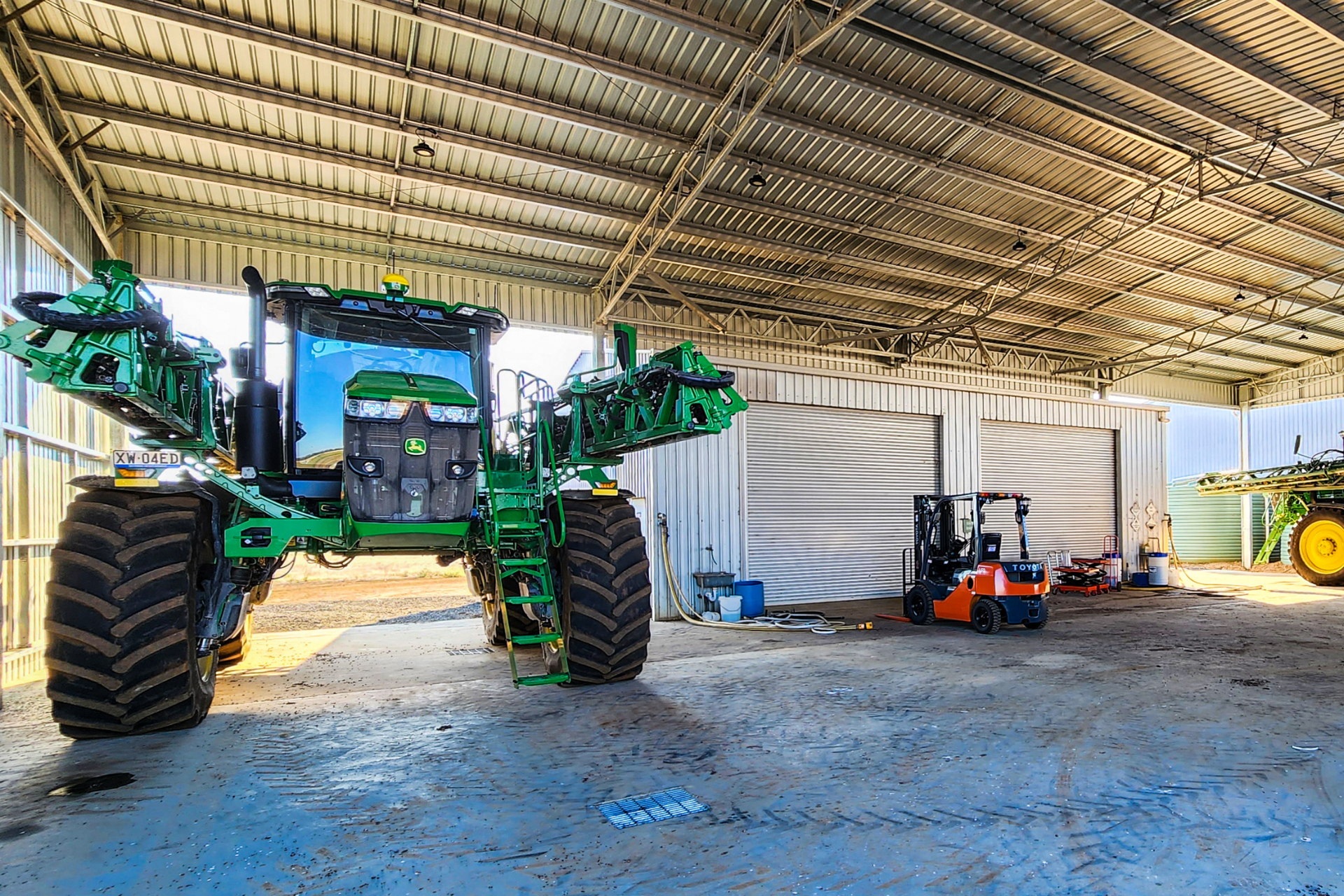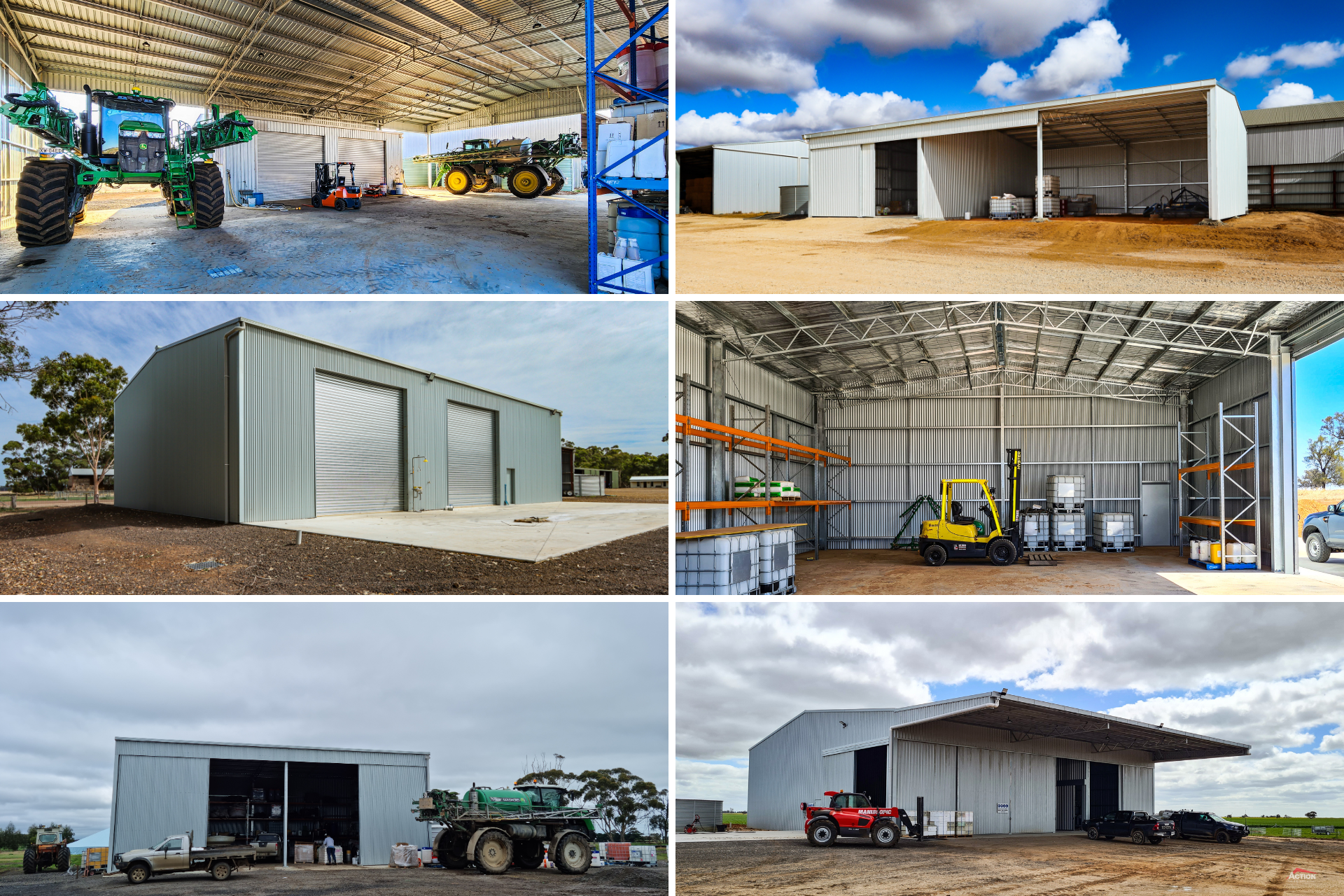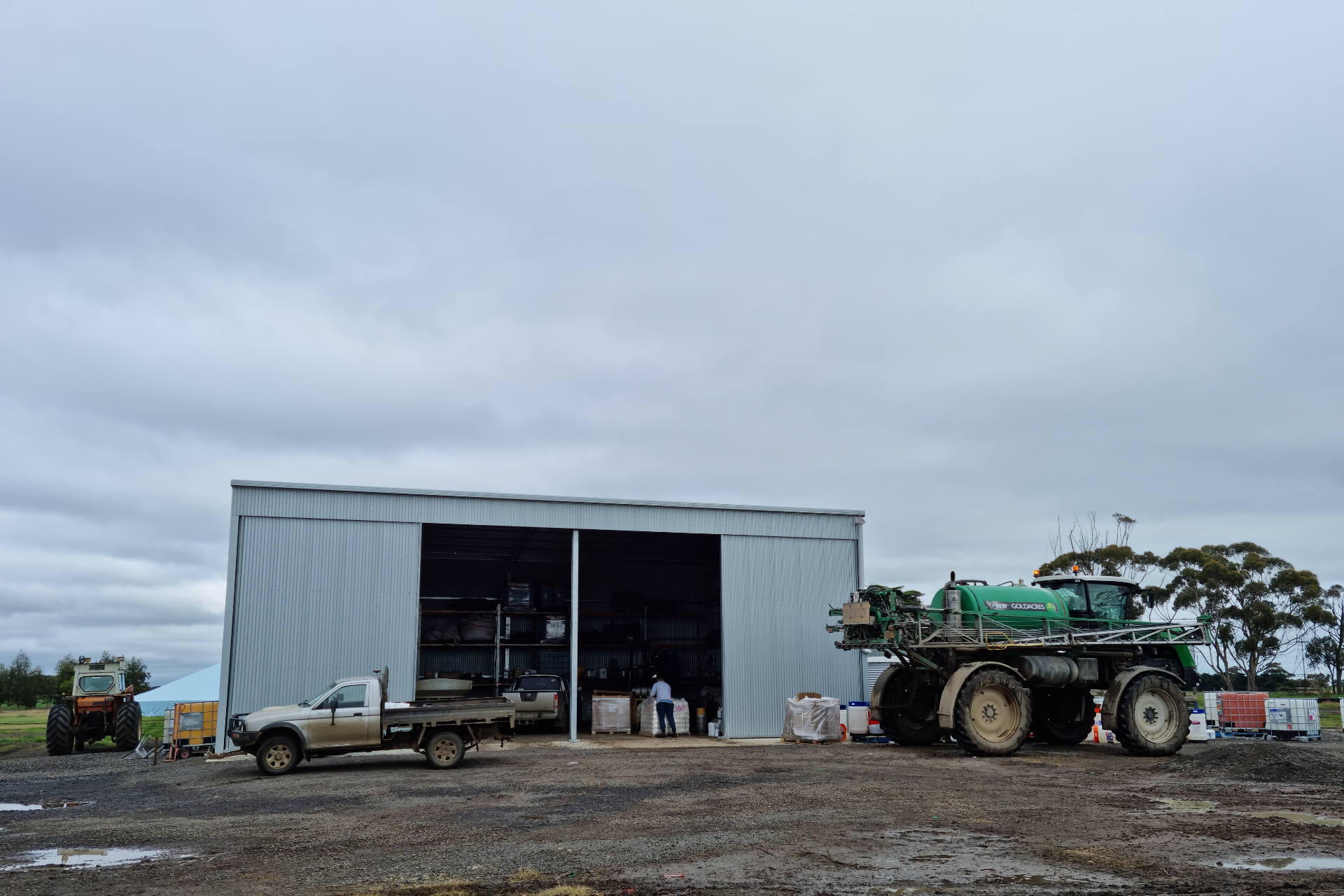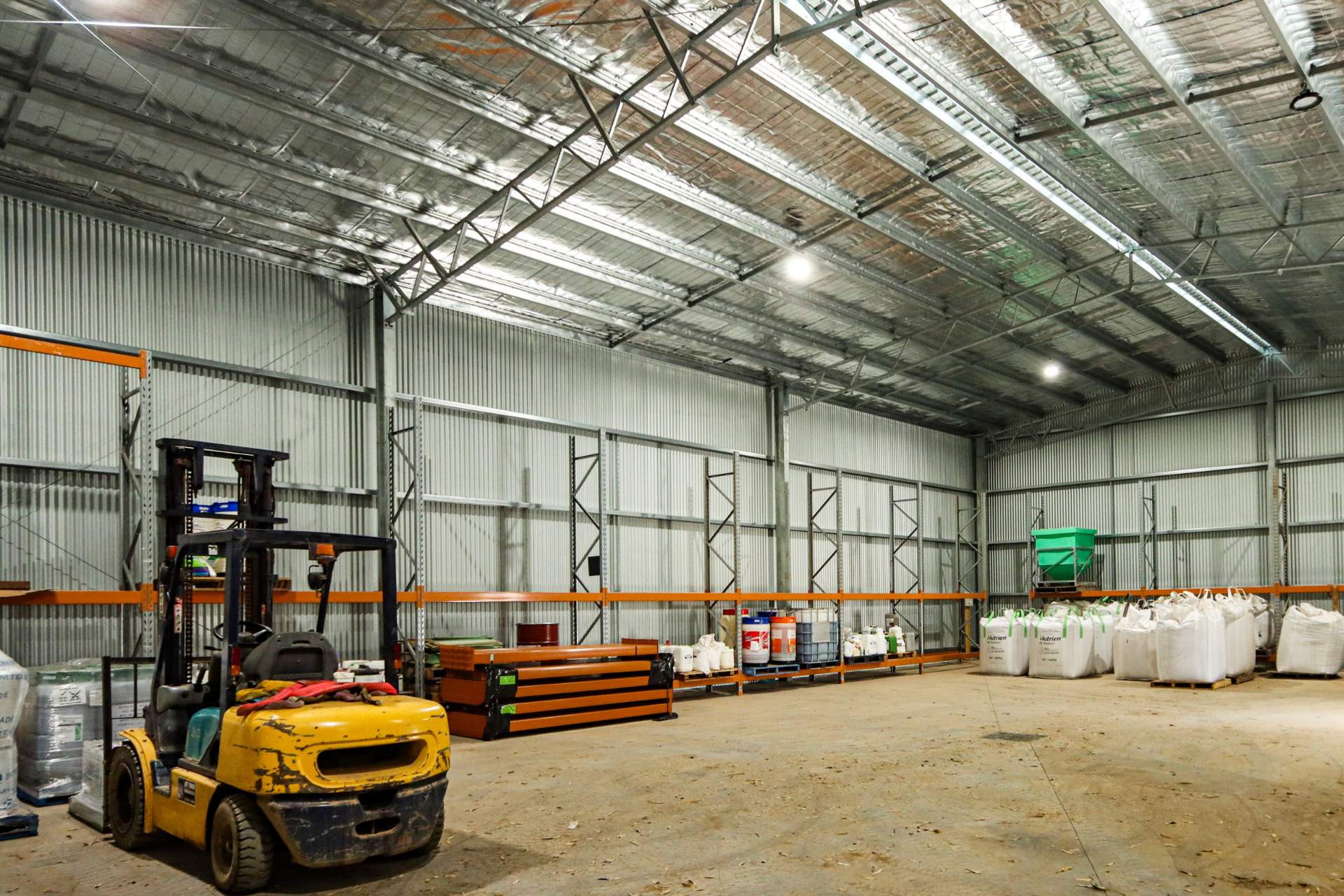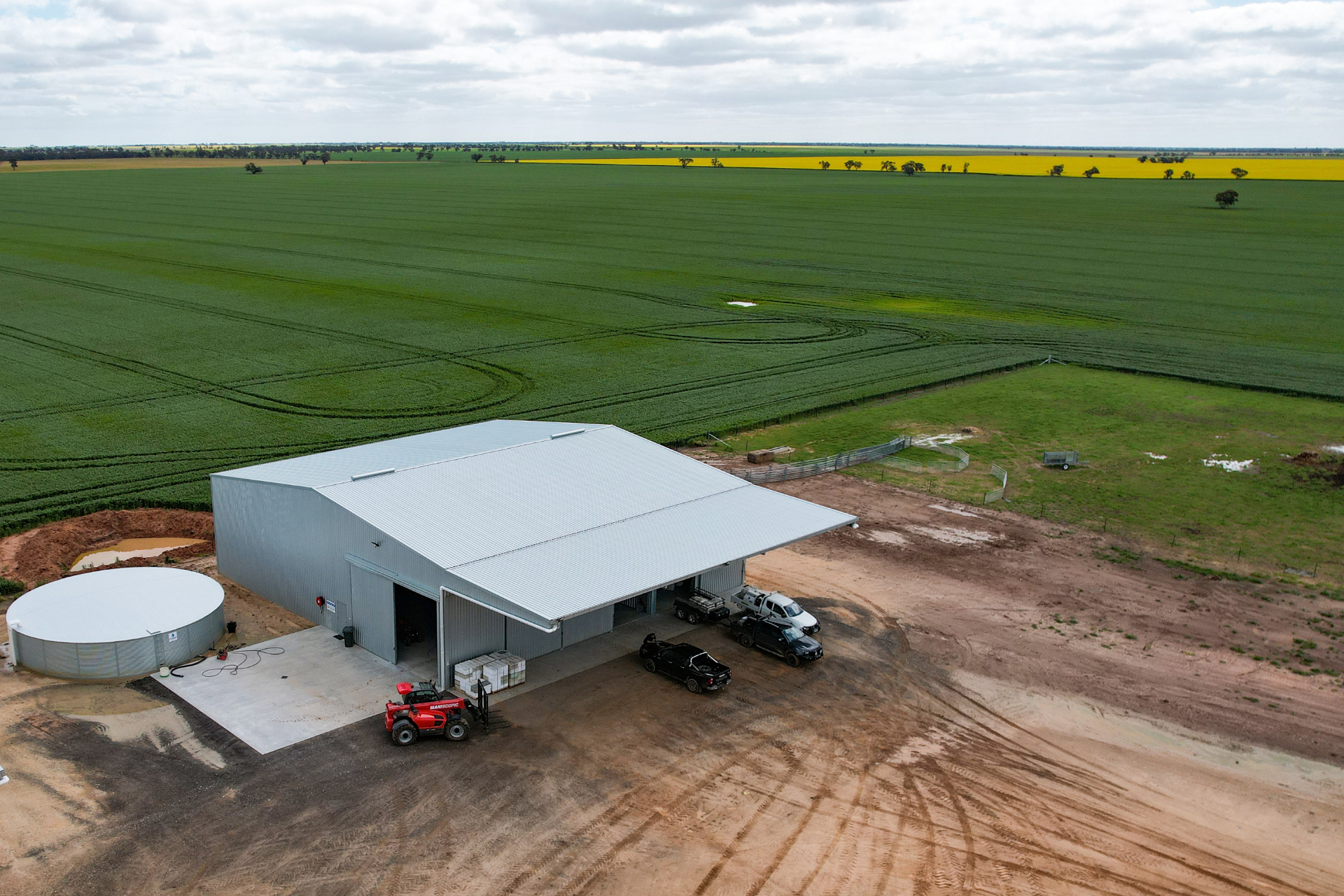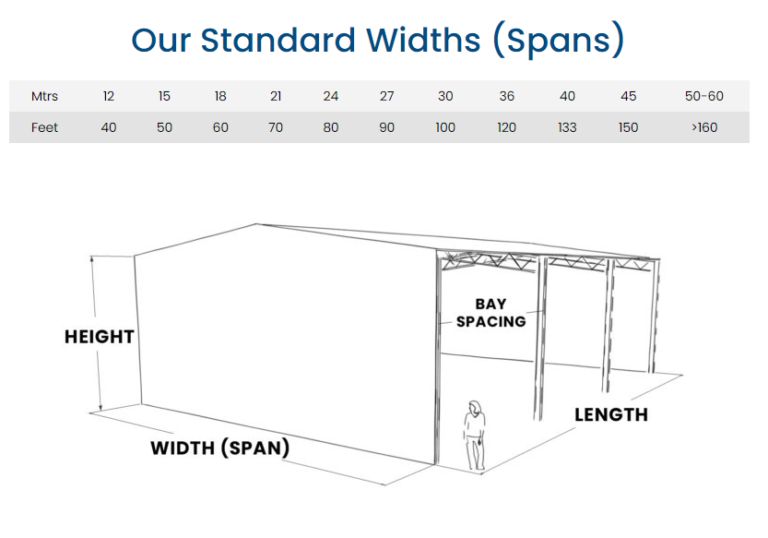What are the sustainable grain chemical storage requirements?
How do I need to store my chemicals? What are the benefits?
Where should I build my chemical shed? What design features should I include on my shed? Does the floor need bunding?
These are all increasingly common questions!
In this article, we provide an overview of ISCC, Sustainable Grain Australia, chemical storage requirements for sustainability, suggestions on how to achieve this and useful industry resources.
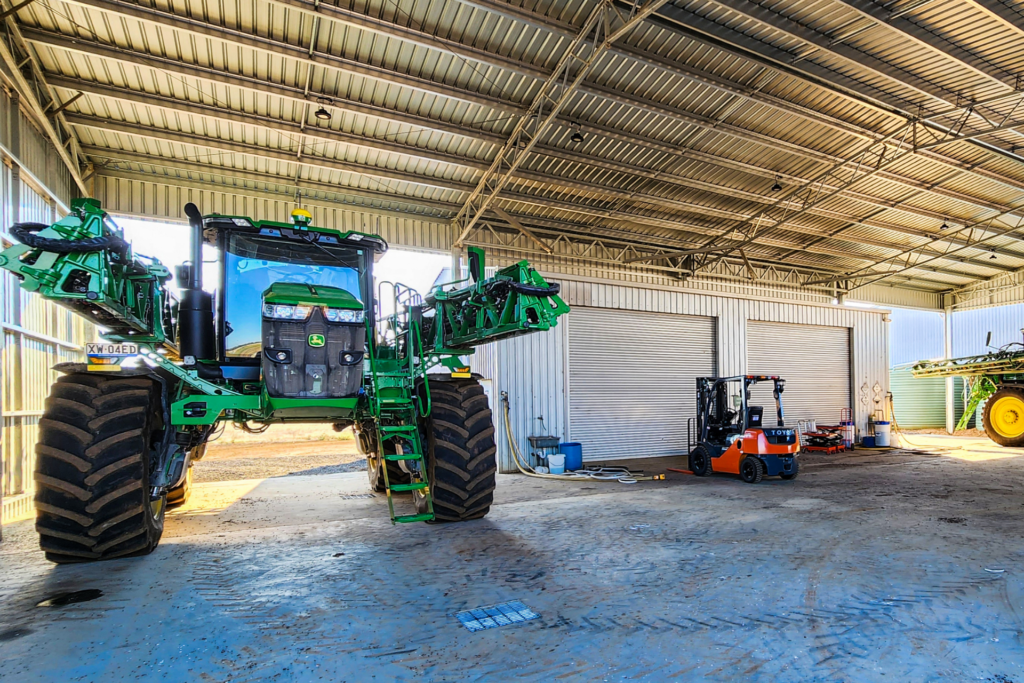
What Is The ISCC?
The ISCC stands for International Sustainability and Carbon Certification and is an internationally recognised auditing system.
This system is used to audit growers and certify Australian grains for sale as sustainable such as canola and barley used to produce export malt.
The auditing process for sustainable grain covers topics such as cropping rotations, paddock inspections, waste management, general farm safety and chemical use and storage.
This process reflects the 6 principles that are the foundation of the ISCC system:
1. Protection of land with high biodiversity value or high carbon stock.
2. Environmentally responsible production to protect soil, water and air.
3. Safe working conditions.
4. Compliance with human and labour rights and responsible community relations.
5. Compliance with land rights, laws and international treaties.
6. Good management practices and continuous improvement
You can learn more about ISCC here.
Why Use The ISCC?
Sustainable Grains Australia (SGA) have adopted the ISCC system to assist participating exporters such as ADM, Cargill, Viterra and CHS Broadbent to successfully market and trade Australian grains internationally and establish Australian grains as the preferred and sustainable option.
For example, canola sold into the European biofuel market needs to satisfy the requirements of the EU’s (European Union’s) RED (renewable energy directive).
CBH Marketing and Trading have also implemented the ISCC system, giving Western Australian growers opportunities to access to these markets.
We discuss the additional benefits of sustainable grain certification for growers – such as premium prices – further on in this article.
Who Are Sustainable Grain Australia?
Sustainable Grain Australia is the main ISCC office for Australian grain traders, developed by the Australian Oilseeds Federation (AOF) and is integrated with the National Grower Register.
This is intended to simplify, standardise and streamline the auditing and certification processes for growers.
SGA also assists any growers being audited.

The Benefits Of Sustainable Grain Certification
Custom-built farm chemical storage sheds are in high demand as cropping enterprises seek to satisfy chemical storage requirements for sustainability certification.
So, what are the actual benefits of certification?
While there is no obligation to participate in the ISCC program – it is a voluntary program – there are several benefits to consider.
As we have already briefly mentioned, sustainability certification provides growers and exports with access to international markets such as the European biofuel market – and this industry pays a premium for certified canola.
Preparing for the audit process can also be a positive experience, providing an excellent opportunity to holistically review and improve farming practices and processes.
This is reflected in the Grain Producers SA case study of Yeelana grower, Jordan Wilksch. – Read this here.
Furthermore, sustainability certification is likely to provide access to more market opportunities in the future.
Companies worldwide are actively seeking to improve their sustainability credentials and for food, beverage, fuel and fibre companies committing to the Sustainable Agriculture Initiative, the sustainable production of agricultural raw materials is essential for this.
Certification is a great way to ensure Australian growers are in the best position to capitalise on this increased demand.
What Are The Sustainable Grain Chemical Storage Requirements?
There are a number of chemical storage requirements included in the Sustainable Grain Australia ISCC grower self-assessment and audit checklist.
Firstly, your chemical shed needs to be a secure lock-up structure that is suitable for storing chemicals.
For example, it should be manufactured from inflammable materials and have a RE30 rating, which means it will resist a fire for 30 minutes.
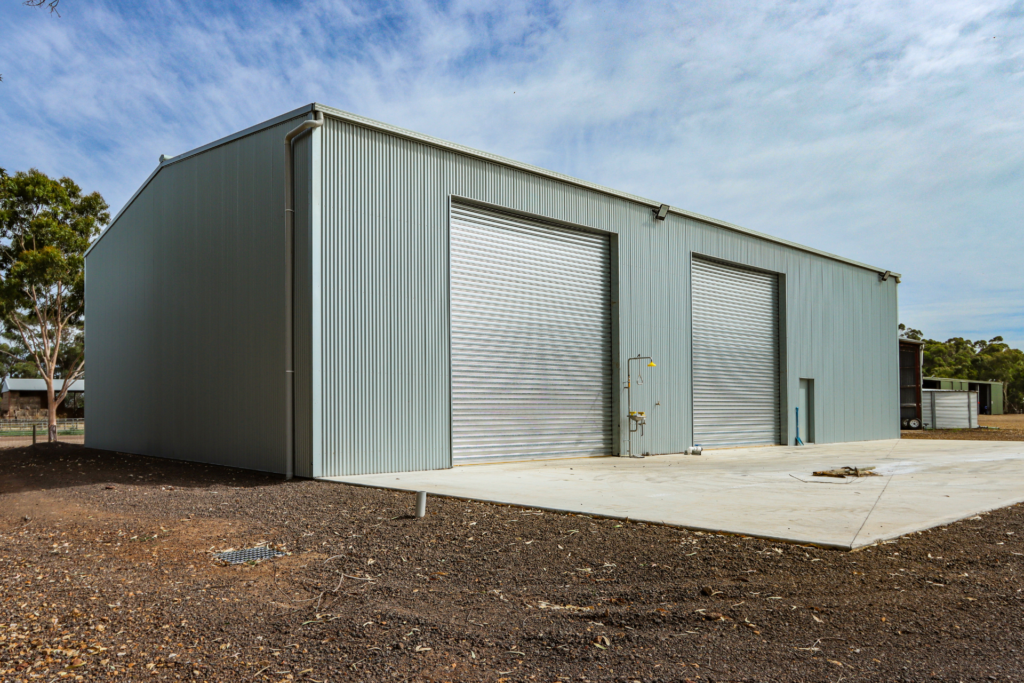
Additional details to address include:
- Having the required signage installed and clearly visible.
- Ensuring the shed is well-ventilated to create a safe working environment and reduce the risk of fire.
- Keeping the shed well illuminated for safe conditions when working with chemicals i.e. reading labels, preparing chemicals or working during low-light hours.
- Having a sealed, bunded concrete slab with the appropriate storage volume and drainage.
We would also recommend paying attention to shed access points, to ensure that the shed can be safely exited in the case of an emergency.
The shed layout is also an important detail to consider such as storing flammable chemicals away from access points and installing pallet racking to allow solid fertilisers to be stored above liquid fertilisers.
For further guidelines, the SGA refers to the R-002 ChemCert guide to storing hazardous chemicals.
Chemical storage is just one aspect of the compliance process and there are other points to address including chemical usage and disposal. We have listed some examples below:
- Mixing facilities should be located to avoid run-off into environmentally sensitive areas.
- Spill kits need to be easily accessible.
- Chemical inventories need to be documented regularly and any residual or leftover chemicals need to be disposed of appropriately.
- Fresh water must be located near the mixing areas.
This is just an overview of some of the requirements related to chemical storage.
You can access the complete self-assessment checklist form – here. If a grower is selected for auditing, this form needs to be submitted to SGA.
It is important to note that the audit will extend to other sheds and storage areas on your farm including machinery sheds and workshops. For example, this may involve having up-to-date first aid kits installed and making sure that old chemical drums are not used for storing bolts and parts.
How To Satisfy The Sustainable Grain Chemical Storage Requirements
A custom-built shed dedicated to chemical storage is widely recognised as the best way to store chemicals on-farm.
There are several design details and considerations to address with your chemical shed project to ensure it provides safe and compliant storage – and satisfies the sustainable chemical storage requirements.
These include ventilation, lighting, access and flooring.
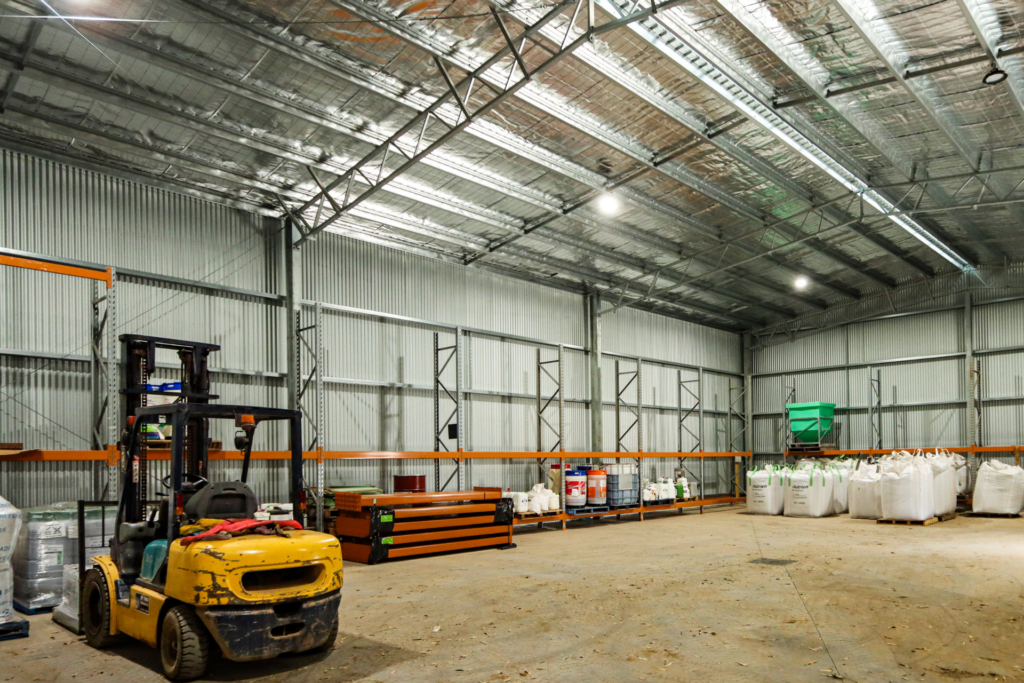
When it comes to chemical shed ventilation options, there are three main ways this can be achieved – ridge ventilation, whirlybird vents and wide sliding door openings. Our chemical shed designs typically include a combination of these features to achieve the ideal result.
For chemical shed lighting, the open web truss structure of an Action shed allows hi-bay lights to be easily suspended from the roof. During the day, sliding doors can be opened to take advantage of the available natural light – and to provide airflow.
If your chemical shed includes an washdown area or canopy, we would also recommend installing lights on the outside of the shed. This allows the facility to be safely accessed in low light.
We have already discussed the importance of planning the safe access and layout of your chemical shed. Our chemical shed designs typically use a combination of either roller doors or sliding doors and personal access doors.
Concrete slabs are a must-have inclusion for chemical shed builds, and this is usually required to be able to contain 25% of the total volume of chemicals stored or 110% of the largest container, whichever is greatest. The slab will also require a drainage point to an evaporation pit outside.
Keep in mind that on-farm chemical storage requirements can vary between states. We included a summary of these in our On-Farm Chemical Shed Guide and this article – What Are The Requirements For Farm Chemical Storage?
Sustainable Grain Chemical Storage Shed Inspiration Gallery
Sometimes the best way to plan your shed project is to get ideas and inspiration from other farmers.
We have created a gallery of recent chemical shed projects to help you kickstart your planning and to help you comply with the sustainable grain chemical storage requirements.
These projects include some great features such as separate storage and mixing areas, cantilevered canopies and washdown areas.
On Farm Chemical Shed Guide
For more chemical shed ideas and information such as farm chemical storage requirements in your state, download the On-Farm Chemical Shed Guide.
This guide can help you develop a chemical shed design that is safe and functional and meets requirements and regulations.
Our building consultants are also available to provide ideas and advice on best-practice design. Call 1800 687 888 – we would love to hear from you.
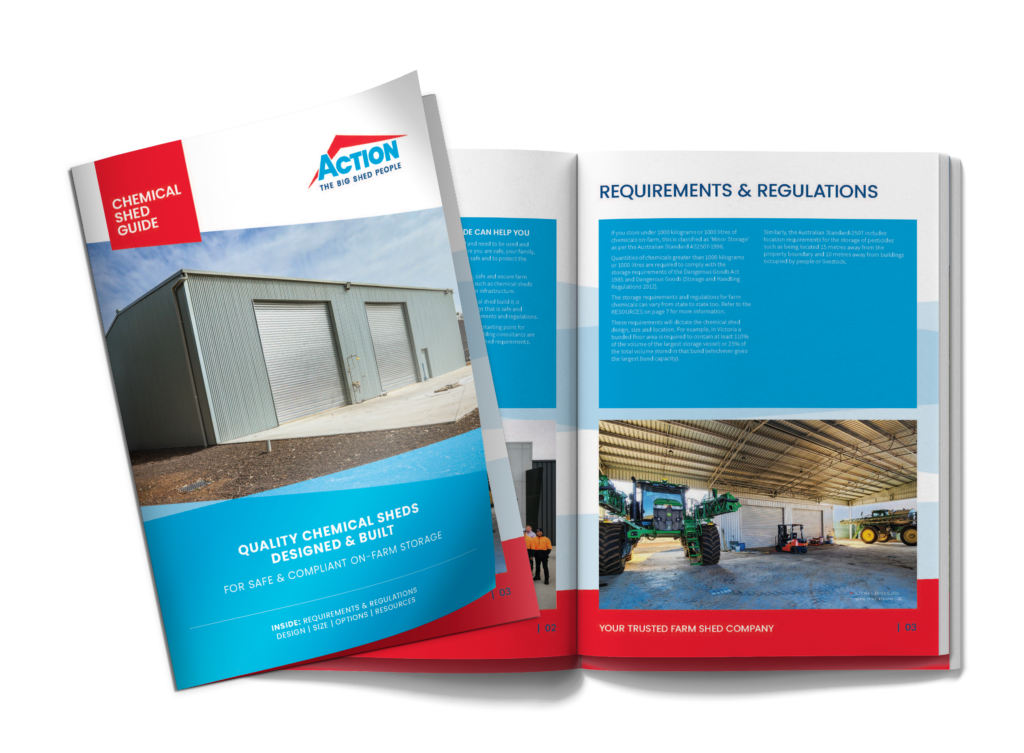
We trust this discussion about sustainable grain chemical storage requirements has been helpful and has given you practical ideas to implement for your chemical shed.
Safety and compliance are always important for our workplaces and the wider agriculture industry, and satisfying the sustainable grain chemical storage requirements can also open up new opportunities.
For more information and articles, check out the Learning Hub. Or for shed project pricing, simply submit a REQUEST A QUOTE FORM.

